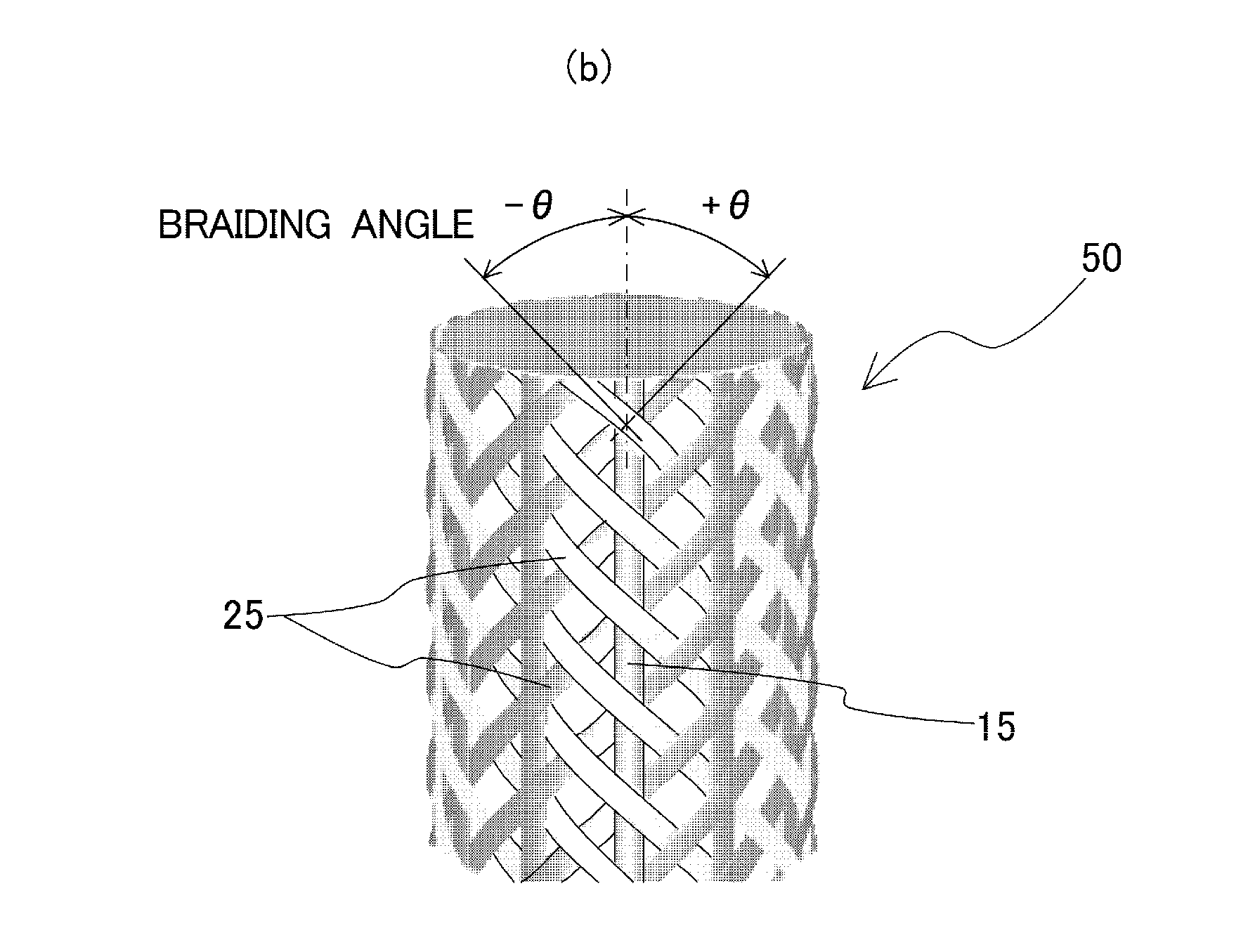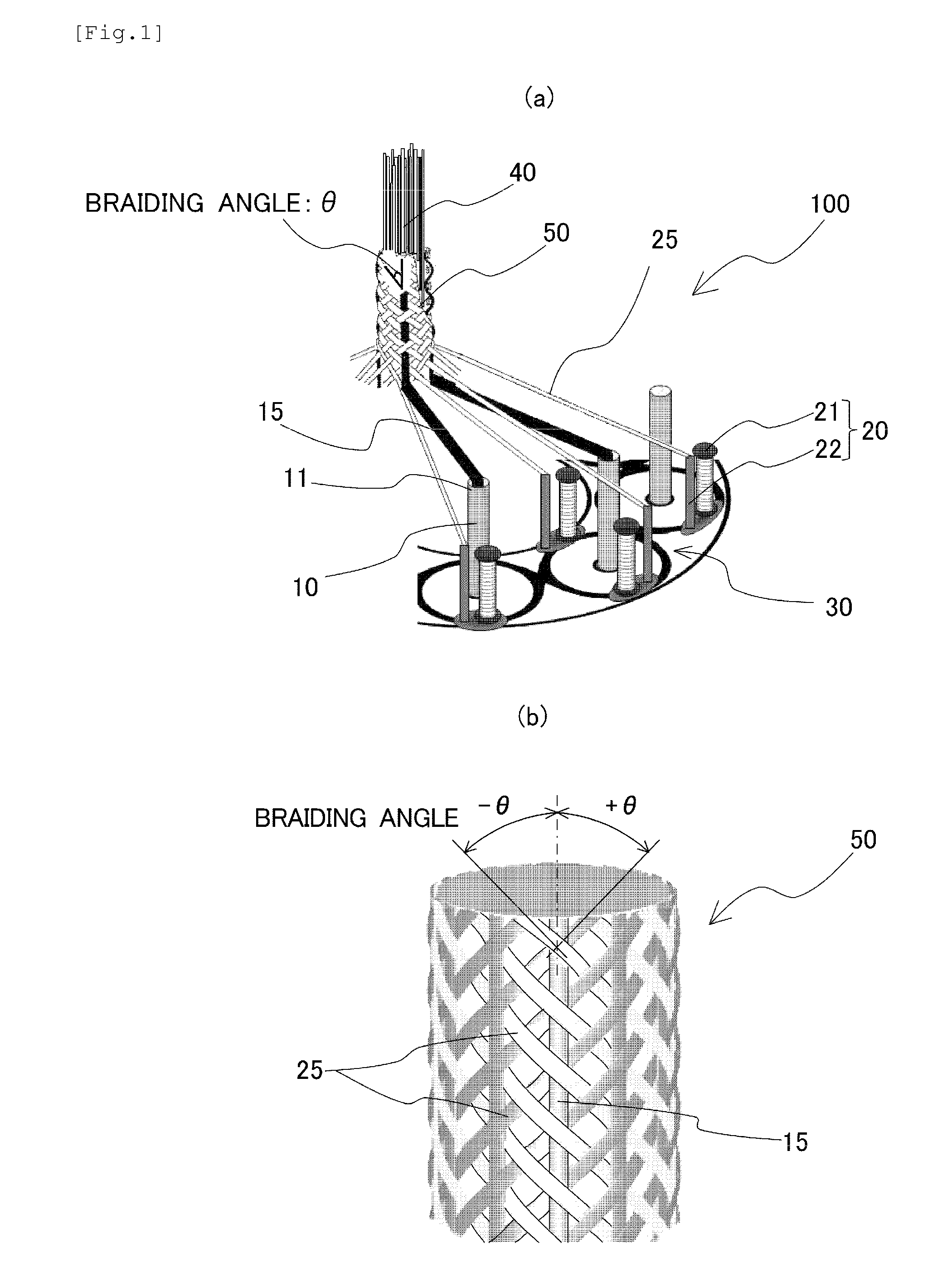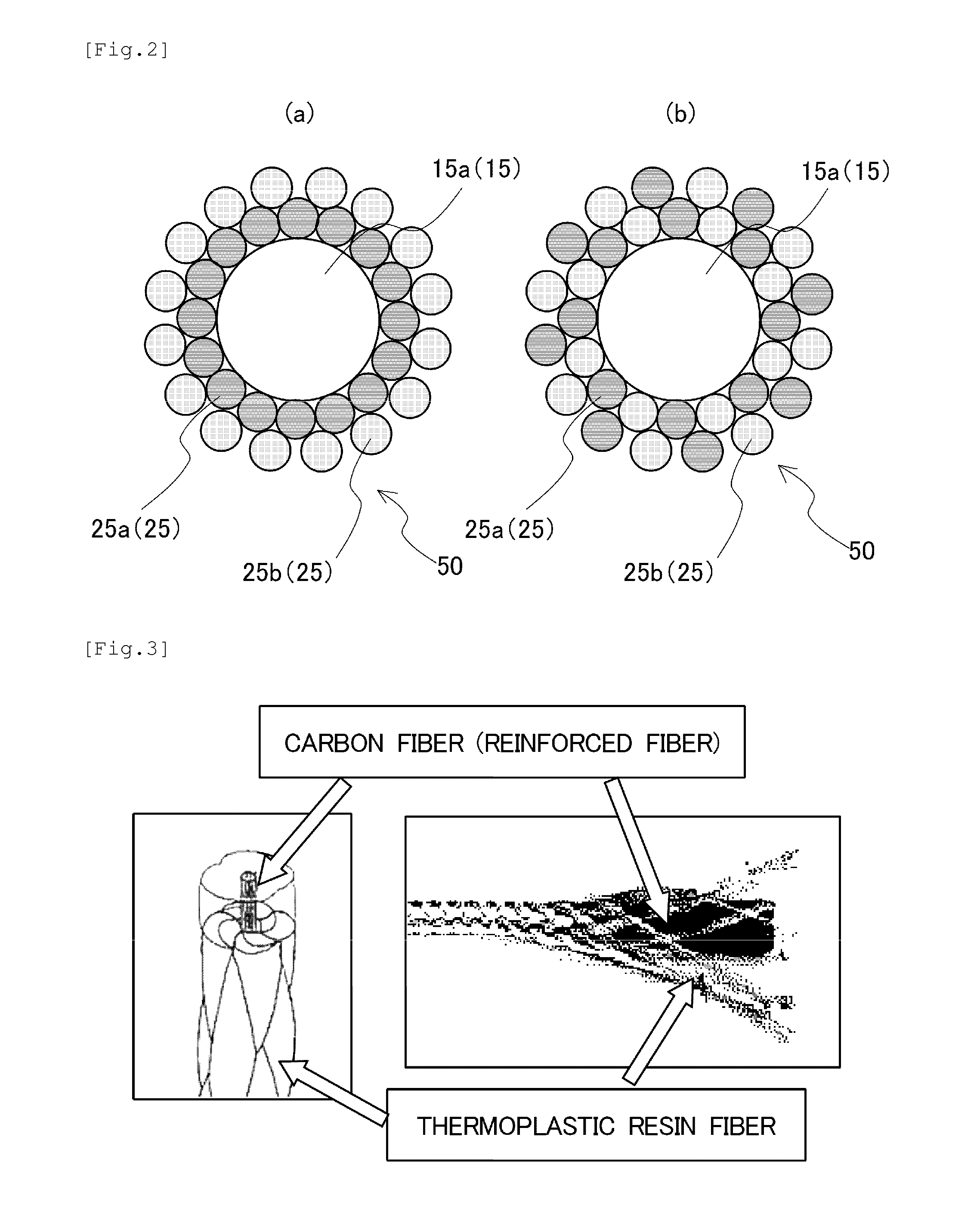Reinforced fiber/resin fiber composite, and method for manufacturing same
a technology of reinforced fiber and resin fiber, which is applied in the direction of braid, ornamental textile articles, textiles and paper, etc., can solve the problems of insufficient strength of molded products, inability to impregnate long fibers with thermoplastic resins, and inability to achieve good mechanical properties, easy to carry out, and accurate control of structure and composition
- Summary
- Abstract
- Description
- Claims
- Application Information
AI Technical Summary
Benefits of technology
Problems solved by technology
Method used
Image
Examples
examples
[0059]Examples relating to the reinforced fiber / resin fiber composite (hybrid fiber composite) of the present invention which is manufactured using the above braiding technique will be described. In the examples, a carbon fiber is used as the long fiber which is a reinforced fiber, and a polypropylene (PP) fiber and an acid-modified polypropylene (MAPP) fiber which is obtained by modifying a PP fiber by maleic acid are used as the thermoplastic resin fibers. As described above, a PP fiber has good resin impregnation characteristics and slightly poor interfacial characteristics (e.g., interfacial shear strength). On the other hand, an MAPP fiber has slightly poor resin impregnation characteristics and good interfacial characteristics. Therefore, attempts have been made to braid a PP fiber and an MAPP fiber on the surface of a carbon fiber using the braiding technique to obtain a hybrid fiber composite, thereby simultaneously achieving good impregnation characteristics of the thermopl...
PUM
| Property | Measurement | Unit |
|---|---|---|
| pressure | aaaaa | aaaaa |
| temperature | aaaaa | aaaaa |
| angle | aaaaa | aaaaa |
Abstract
Description
Claims
Application Information
 Login to View More
Login to View More - R&D
- Intellectual Property
- Life Sciences
- Materials
- Tech Scout
- Unparalleled Data Quality
- Higher Quality Content
- 60% Fewer Hallucinations
Browse by: Latest US Patents, China's latest patents, Technical Efficacy Thesaurus, Application Domain, Technology Topic, Popular Technical Reports.
© 2025 PatSnap. All rights reserved.Legal|Privacy policy|Modern Slavery Act Transparency Statement|Sitemap|About US| Contact US: help@patsnap.com



